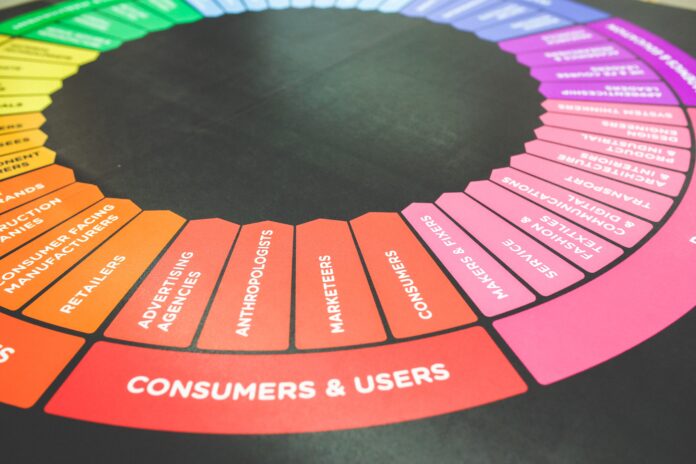“Calling all cars, calling all cars. Be on the lookout for a 45-year-old white male, 5′ 9″ tall, approximately 165 pounds. He has brown hair, blue eyes and is married with two children. He’s a middle-class guy making about $100,000 per year and lives in Pasadena. If found, offer him a free download and get him into our marketing funnel.”
Have you clearly defined your target customer? Can you put out a specific and unambiguous APB (all-points bulletin) to anyone you expect to market your business?
Unfortunately, most businesses I encounter have an APB that goes something like this: “Calling all cars, be on the lookout for everyone in Pasadena who needs [service you offer].”
That is simply not going to cut it. Why? There are two big reasons. The first reason is: You cannot afford to have everyone be your target. Marketing budgets don’t enjoy economies of scale. If you’re trying to reach every man, woman, and child — of all generations and creeds — simply because they are candidates for your product or service, then all you’ve done is split your one big budget into a whole bunch of tiny budgets.
So, while you’re spending a fraction of your marketing dollars on each segment, your competitors can commit 100% of their budget to the same segment. This puts you at a significant disadvantage.
The second reason is even more critical to your business: You can’t craft a compelling message to “everyone.” If, for example, the company above was a remodeler in Pasadena, then consider a young couple with a toddler looking to remodel their kitchen. Now, contrast that with a single woman. She’s a C-Suite executive in her forties making $400k per year, and she, too, is looking to remodel her kitchen. What could you possibly say that would resonate with both? Nothing.
They have very different wants, needs, and desires. So, your only choice is to give bland, generic, unemotional messages about yourself. And talking all about yourself in your marketing copy is a big no-no. As stated in The Dilly Dilly Manifesto, “[You must] focus all your attention on the one person you’re trying to sell. Speak to that person about his wants, needs, and desires.”
That’s why you must have a clearly defined target. It’s the first step to successful marketing. Everything you do relies on it. So, how specific should you get? Well, you may be thinking that the APB I opened with is an example of what you should be striving to achieve. It is not.
For one thing, it’s unlikely you’ll ever want to target people by height, weight, and eye color. But beyond that, the APB above is only providing demographic information. If you are not familiar, demographics are the measurable dry facts you use to identify your target customer, such as age, race, sex, marital status, income, etc. While demographics are essential facts to identify, they only paint part of the picture. You must also include your target’s psychographic traits.
Psychographics are the underlying interests, activities, values, opinions, aspirations, and other psychological factors that motivate your target customer. These are much more difficult to identify. But they are critical to marketing success.
If you’re having doubts, then let’s take a look at the original APB: “… Be on the lookout for a 45-year-old white male, 5′ 9″ tall, approximately 165 pounds. He has brown hair, blue eyes and is married with two children. He’s a middle-class guy making about $100,000 per year and lives in Pasadena…” This is incredibly specific. That’s because I’m describing Doug Kinney, a character in the 1996 comedy Multiplicity, played by Michael Keaton.
If you’re not familiar with the film, it’s about an overworked construction worker who has no time for his family and even less time for himself. After having a brief emotional “freak out” on one of his job sites (which just so happens to be a science lab), a friendly scientist offers to clone him. While the clone (called “Two”) is an exact replica of Doug physically, he has a different personality: a macho, beer-drinking workaholic that expects excellence at the office. He likes sports, fast cars, and women.
Needless to say, “Two” is so busy with work that he can’t help around the house, so Doug goes back to the lab and creates “Three.” Three turns out to be a compassionate and caring guy that loves to cook. He’s well-groomed and a bit fussy, even giving his wife (well, Doug’s wife) hairstyling tips at one point.
Two and Three start feeling overwhelmed, so they decide to make “Four,” but we won’t get into what happens when a copy makes a copy. The point here is that all four “Dougs” meet the demographic data provided as your target market. However, all four have entirely different values, interests, and opinions. As you can imagine, they would each respond in very different ways to your message.
So how do you discover the psychographics of your target customer? The most common method is through formal market research. Make a deliberate and purposeful attempt to find out what makes your target tick. You’ll want to go back and look at your past customers. Which ones were the best to work with? Do you consider any of them to have been “the perfect” customers? If so, then you should focus on them first.
Give those customers a call. Offer to take them to lunch. Tell them you’re looking to learn more about your best clients, and you’d like to treat them to lunch to chat about it. Or, if you’re feeling ambitious and want to get the ball rolling quickly, you could host a focus group. Invite a small group of six to ten past clients for a two-hour session, complete with light snacks, beverages, and a small swag bag as a thank you for participating.
Whatever method you use, it is critical that you clearly define your target customer’s demographic and psychographic traits. Doing so will allow you to craft powerful messaging that resonates with your audience, and it ensures that you are maximizing the return on your marketing dollar.

Additional Insights: The Secret to Running a Successful Focus Group
Focus groups are powerful tools to discover the why behind your customers’ thinking. These are small groups of carefully selected participants, led by a facilitator, to provide insight through open discussions. Therefore, a focus group’s success depends entirely on the facilitator’s ability to manage and interact with the group.
Here are some things to keep in mind. A good facilitator must:
- Create an environment of trust and openness.
- Create, establish, and enforce ground rules.
- Be respectful and nonjudgmental.
- Be a good listener and communicator.
- Be Switzerland (don’t choose sides or endorse opinions).
- Be able to limit participants that dominate the conversation.
- Be able to get the quiet and timid to contribute.
- Defuse disagreements if they occur.
Equally important is that the facilitator asks the right questions at the appropriate phase of the study.
Phase 1: Get Comfy
People tend to be reserved and apprehensive about opening up when put in a room with strangers. So, phase one questions should be easy “softball” questions that get everyone sharing stories about common experiences. Questions like, “How was your drive in today?” and “Do you have anything exciting planned after you leave here today?” work well to get everyone comfortable sharing with the group.
Phase 2: Exploration
This phase is the meat-and-potatoes of the session. Here we dive deep and try to get detailed responses. There are two types of questions to be asked:
- Probing – These questions must be opened-ended (not answerable with a yes or no) and should be phrased to get as much detail as possible.
- Follow-Up –These questions are the most challenging because they can’t be planned. The facilitator must derive them from the responses to the probing questions. By asking follow-up questions, you can dig deeper and get others to contribute to a point that’s just been made.
Phase 3: Wrap-up
As the session ends, the objective of this final phase is to be sure nothing has been left unsaid. It is quite literally all about opening the floor to the group. Something as simple as, “Is there anything else you’d like to say about X that hasn’t been discussed?”
With these components in mind, you’ll be well on your way to running a successful focus group.
Find a Home-Based Business to Start-Up >>> Hundreds of Business Listings.

















































